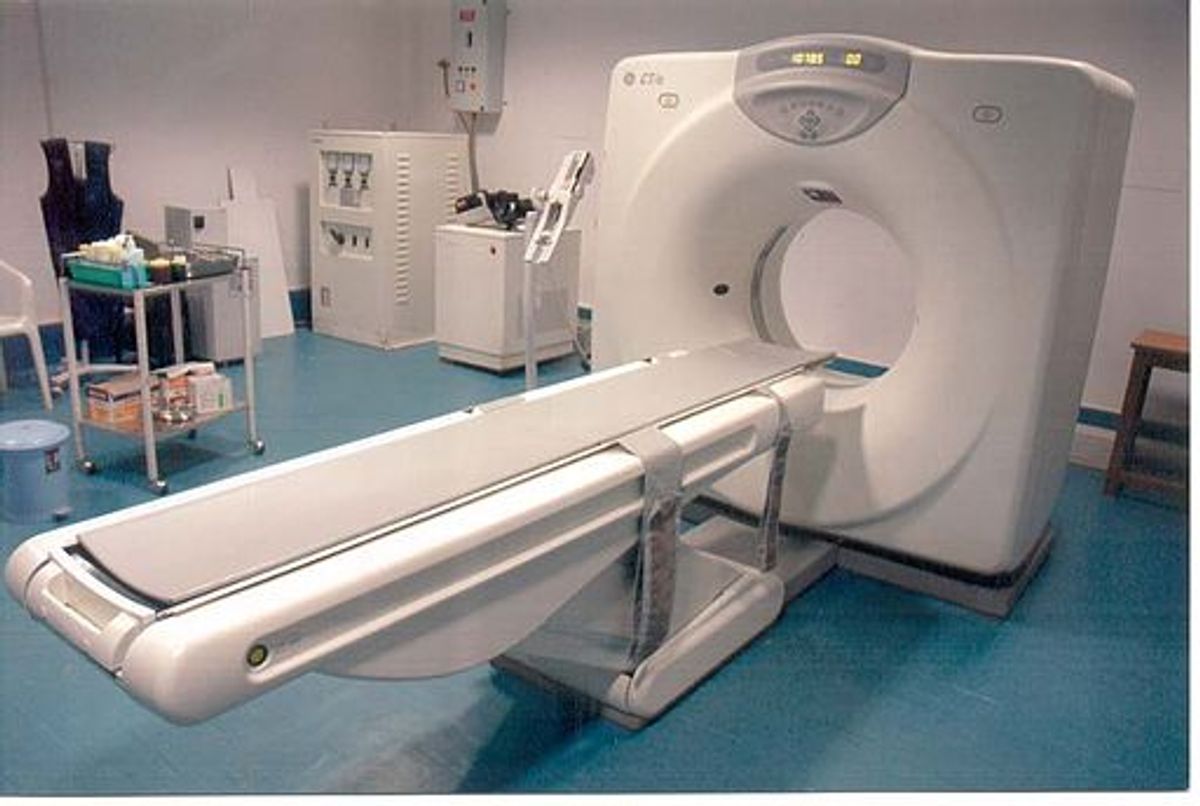I'm a CT refusenik. There hasn't been a whole lot of scientific support for my position, so a story in today's news—“Experts recommend closer scrutiny of radiation exposure from CT scans”—was welcome. Individual doctors, though, have had their suspicions all along, and they're the source of my resistance.
Back in 2005, as I was packing up my then-ten-year-old-and-small-for-her-age daughter to transfer from the pediatrician’s office to the emergency room with possible appendicitis, the pediatrician pulled me aside for a moment. “They’re going to want to do a CT,” she said. “Tell them no, that you want an ultrasound. They’ll say you’ll have to wait for an ultrasound, while you could get her a CT right away. Tell them you’ll wait. I’ve read some research on abdominal CTs in children and it concerns me.” Before that quick conversation, I had never given a second thought to the risks of CTs, but I followed the pediatrician’s advice, and the conversation in the emergency room went exactly as she had predicted. We waited, the ultrasound was conclusive, and my daughter’s appendix was removed a couple of hours later.
Four months later, I was back in the ER with my daughter after she’d gotten hit in the head with a ball. Again the ER doctor started writing up an order for a CT. Again I asked for an alternative. That doctor said that they could do an MRI if I “refused the CT” but they couldn’t sedate her for it and they typically sedate kids so they don’t freak out. He wrote “parent refuses CT on her chart.” They did the MRI; she didn’t freak out.
Just last year, my 20-year-old son was sent from the doctor’s office to the ER with suspected appendicitis, and I texted instructions to him to refuse the CT and hold out for the ultrasound. (He did wait for an ultrasound and the appendix turned out to be fine.)
I hope I don’t ever have to talk to an ER doctor about a CT again, but I’m not counting on it. So today’s story from the University of California at Davis is one I’m printing out and carrying in my wallet.
The gist of it:
- We don’t fully understand the biologic effects of medical imaging.
- The number of CT tests conducted in the U.S. is going up 10 percent a year.
- CT machines made by different manufacturers have vastly different control systems, increasing the chance of human error such as administering an incorrect dose of radiation.
- Kids and small adults can absorb two to three times the expected radiation because settings are standardized on "average-size" adults.
This analysis came out of the Radiation Dose Summit, a meeting of more than 100 medical physicists, radiologists, cardiologists, engineers, industry representatives and patient advocates in 2001. The findings were published in the November 2012 issue of Radiology, with UC Davis professor John Boone as lead author. Boone could have been talking to me when he said (as reported in the story), "In reaction to media coverage of radiation overexposure cases, some patients refuse to undergo medical imaging procedures. Yet for almost all patients, the risks of foregoing a needed medical procedure far outweigh any potential radiation-associated risks."
But Boone and his coauthors pointed out that what those radiation-related risks are is not exactly clear, and the risk/benefit tradeoff of using CT imaging needs to be better understood.
The summit also recommended some real changes that would both reduce the risks related to CTs and reassure patients. These include building CT machines more like cars—that is, standardizing controls so they are all “driven” the same way; and reducing “wasteful imaging,” that is, tests that have little impact on a diagnosis or outcome.
Meanwhile, Boone said, the University of California is funding efforts at all five of its medical schools to develop more accurate measures of radiation exposure from medical imaging.
Tekla S. Perry is a senior editor at IEEE Spectrum. Based in Palo Alto, Calif., she's been covering the people, companies, and technology that make Silicon Valley a special place for more than 40 years. An IEEE member, she holds a bachelor's degree in journalism from Michigan State University.




